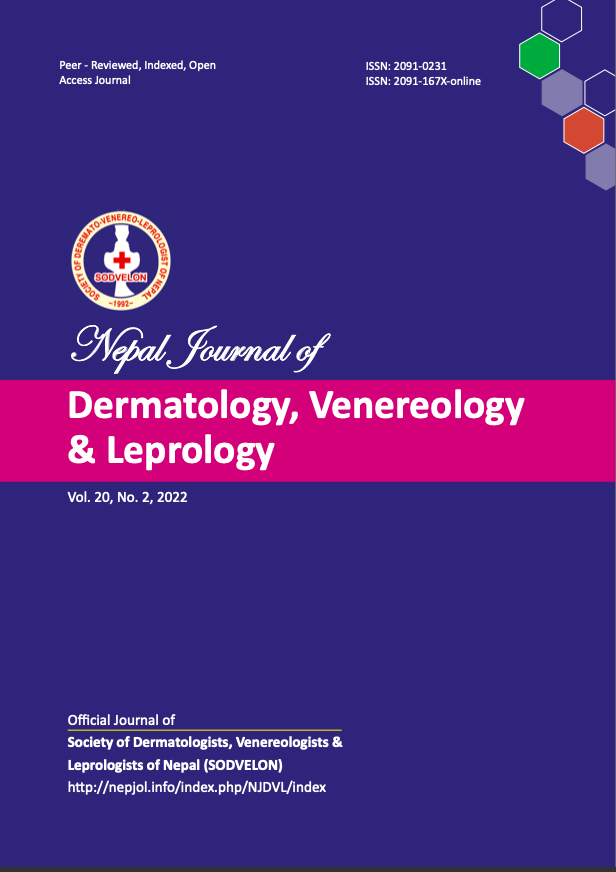Dermoscopy of Non-Melanocytic Skin Tumors: A Descriptive Study in a Tertiary Care Hospital
DOI:
https://doi.org/10.3126/njdvl.v20i2.47617Keywords:
Dermoscopy, Tumor, VascularAbstract
Introduction: Dermoscopy is a non-invasive technique that enhances visualization of morphological lesions invisible to naked eye examination and aids in clinical diagnosis. We study its role in non-melanocytic skin tumors.
Objectives: The purpose of this study was to evaluate and compare the dermoscopic features of non-melanocyte skin tumors of skin
Materials and Methods: A cross-sectional hospital-based study including patients clinically diagnosed as non-melanocytic epidermal tumors was conducted. All dermoscopic findings were studied using a handheld pocket dermoscope (Dermlite DL1) and recorded in a preset proforma.
Results: A total of 100 patients were enrolled in the study with mean age of 37 (+/-18.34). There were 56 % females. The face was the commonest site of involvement (56%). Seborrheic keratosis was the commonest clinical diagnosis (55%), followed by pyogenic granuloma 8%, cherry angioma 7%, haemangioma 6%, basal cell carcinoma 5%, achrochordons 4%, xanthelasma, and sebaceous hyperplasia in 3% each. Squamous cell carcinoma and actinic keratosis were seen in 2% each; Angiokeratoma, Bowens disease, stetocytoma multiplex, syringoma, and neurofibroma were all found in 1% of the patients. In dermoscopy, vascular changes were seen in 41% patients, which appeared as regular in 56.1% and rest 43.9% as irregular. Non-vascular changes were seen in 68%. Dermoscopic findings of vascular and non-vascular changes were statistically significantly associated with various types of non-melanocytic epidermal tumors (P <0.05).
Conclusion: Our study shows histopathological correlation with the existing dermoscopic characteristics increases the diagnostic accuracy of various non-melanocytic tumors. However, more studies are warranted to statistically prove its utility.
Downloads
Downloads
Published
How to Cite
Issue
Section
License
Copyright (c) 2022 Society of Dermatologists, Venereologists and Leprologists of Nepal

This work is licensed under a Creative Commons Attribution 4.0 International License.
Copyright on any research article is transferred in full to Nepal Journal of Dermatology, Venereology & Leprology upon publication. The copyright transfer includes the right to reproduce and distribute the article in any form of reproduction (printing, electronic media or any other form).




